SUMMARY
This is AI generated summarization, which may have errors. For context, always refer to the full article.
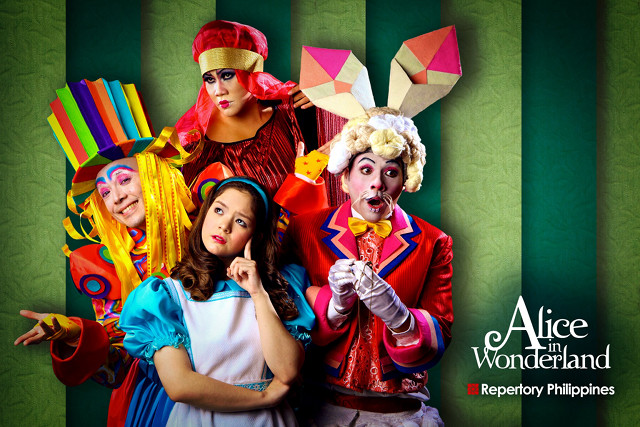
MANILA, Philippines – Alice is a different woman for each generation. Her story has been seen both as an innocent children’s fairy tale and as a psychedelic allegorical pondering on logic disguised as absurdity and nonsense.
A story of an English girl who follows a talking white rabbit down a hole where she meets a hookah-smoking caterpillar sitting on a giant mushroom, who drinks potions that make her big and small and shares tea with a manic Mad Hatter — “Alice in Wonderland” is never the same tale to those who gaze through this literary masterpiece’s looking glass.
Originally authored and illustrated in 1865 by Charles Lutwidge Dodgson aka Lewis Carroll, the novel “Alice’s Adventures in Wonderland” was penned during the Victorian Era — also known as the Belle Epoque — when stifling norms bound the aristocracy like a corset, while poets and painters of the bohemian underground innovated with Art Nouveau and Impressionism, and indulged in absinthe and opium.
In 1951, Walt Disney reinterpreted Carroll’s words and illustrations as a techni-colored animated film.
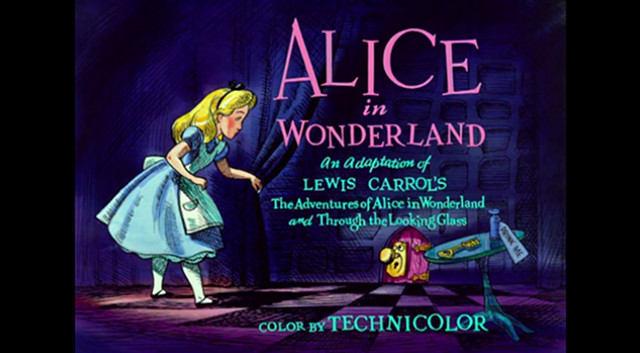
A generation later, during the 1960s counter-culture and protest era, hippies experimenting with hallucinogenics would come to revere this film along with Disney’s other cartoons such as “Fantasia” as a kaleidoscopic experience.
In 2000, the video game “American McGee’s Alice” continued the tale of the heroine in macabre fashion as a girl losing her grasp on reality and having to fight her way out of an asylum populated by homicidal Mad Hatters and Queens of Hearts.
In 2010, movie director Tim Burton fused his brand of haunting Gothic aesthetics with Carroll’s Victorian extravagance to create the blockbuster cinema.
Through the ages, “Alice in Wonderland” has also been referenced countless times in popular culture, from the Beatles rock song “I Am the Walrus” to the “Matrix” science fiction trilogy. Always, there is a protagonist who crosses from this reality to the dream world.
This time around
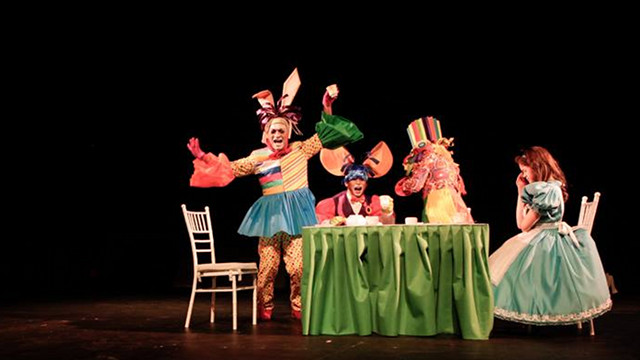
It is Repertory Philippines’ turn to bring Alice to life for today’s generation, with a musical. Choosing the book and lyrics by Jim Eiler and music by Jim Eiler and Jeanne Bargy, the theater company re-stages “Alice in Wonderland” with a stellar cast, avant-garde origami-inspired set designs, fantastic costumes and infectious music.
Among those bringing it to life are:
- Dani Gana and Chaye Mogg as Alice
- Bituin Escalante and Natalie Everett as the Queen of Hearts
- Liesl Batucan as the Duchess
- Nacho Tambunting, Jim Ferrer and Reb Atadero as the Rabbit
- Oliver Usison and Kendrick Ibasco as the Walrus and King of Hearts
- Nic Campos and Joel Trinidad as the French Mouse, the Carpenter and the Mad Hatter
- Onyl Torres and James Stacey as the Caterpillar and the March Hare
Joy Virata is director, Liesl Batucan is assistant director, Baby Barredo is musical director and Jamie Wilson is technical director.
Something borrowed, something new
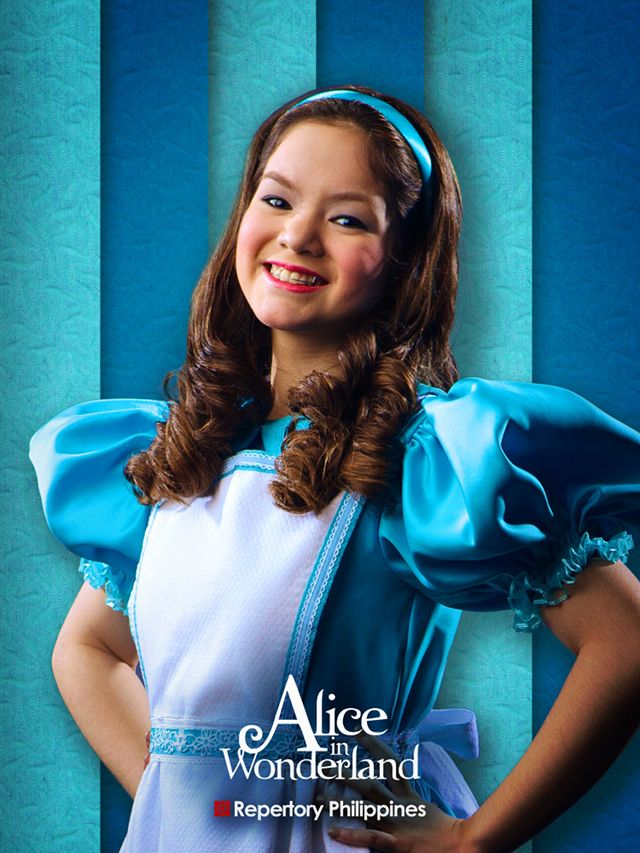
Playing Alice is young performer Dani Gana.
“For research, I’ve read the book and watched the movies; both the 2010 one and the animated Disney movie. I’ve studied those Alices and decided [that] instead of copying them and trying to become something I’m not, I’d make an Alice [based on] myself and bring myself into the role,” Gana says.
“The other Alices were a bit too uptight, too closed off. I didn’t want Alice to be so cold. I wanted her to be a bit younger, a bit friendlier, a more relatable character that the audience will like.”
Liesl Batucan offers a unique insight into the role of Alice, having played the role in 1997. She reveals, “Technically, the main challenge is stamina. You have to keep your energy up because once Alice enters the stage, she never leaves. She’s there for all the scenes.
“Of all the roles in children’s theater, it’s this and Pinocchio — which I also played — that are the most physically demanding for a lead. Vocally, it can get tiring. [With] other leads such as Sleeping Beauty or Dorothy of The Wizard of Oz, you get to rest while it’s the scene of the Wicked Witch. But with Alice, everything is happening to her and around her because it is her dream.”
Gana sees both the upside and downside of her youthfulness. “An advantage is that I have a different take on it. I can surprise people with what I can do. A disadvantage is being overpowered by all the veteran actors who have been here way longer than me and who have so much more experience.”
Batucan advises, “The challenge is not to disappear. As the lead, the audience must be able to latch on to her. Alice has to maintain her energy and not get lost amidst a myriad of colorful, eye-catching and fantastic characters. She still has to be the central figure.”
Bituin Escalante, who plays the potentially scene-stealing role of the Queen of Hearts, sees no danger of overshadowing the young protagonist. “As written, she’s supposed to be so strong anyway. Our Alices come into their own and they do top everyone. It’s written that way. There’s no danger as long as you don’t let the part get ahead of you. You are servicing a story,” she opines.
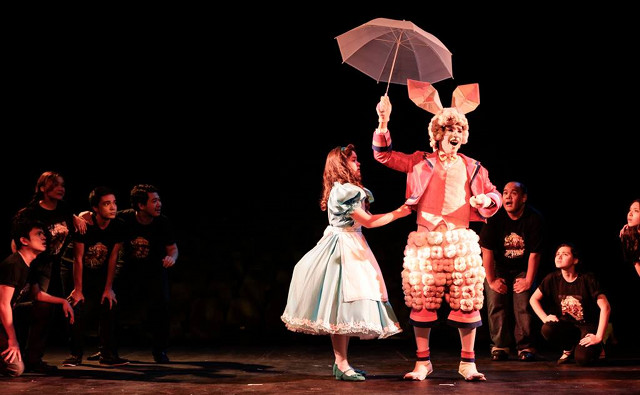
All are aware that the play must entertain, intrigue and charm both children and adults; but not all the players know that the story has a deep subtext with so much cultural significance beneath its innocent fairytale veneer.
This serves the story best. It is those who are truly pure of heart that can portray Alice best.
Batucan summarizes, “The main theme we are going for is that, in the end, Alice — after meeting all these fantastic and bizarre characters (the talking rabbit, cheshire cat, caterpillar) — comes back to England and finds a renewed appreciation for real life.
“Real life is Wonderland, too, with real rabbits, cats and caterpillars. Her dream wakes her to the beauty of real life. That is the lesson we want to teach kids.” – Rappler.com
Repertory Philippines’ ‘Alice in Wonderland’ is set to run from August 17 to December 15 at Onstage, Greenbelt 1, Makati City. For more information, visit the Repertory Philippines Facebook page.
Rome Jorge is the editor in chief of Asian Traveler magazine.
Add a comment
How does this make you feel?
There are no comments yet. Add your comment to start the conversation.